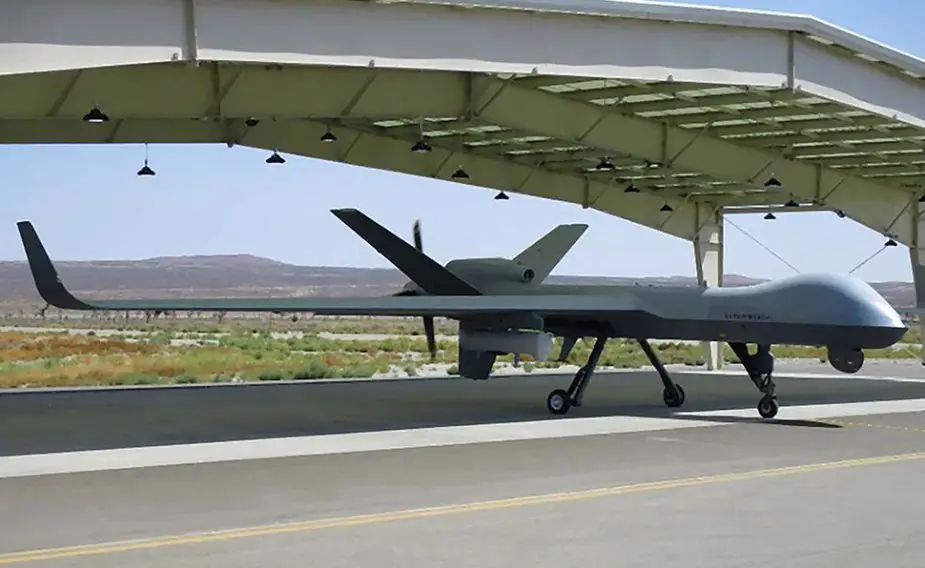General Atomics Aeronautical Systems, Inc. (GA-ASI) played a central role in U.S. Air Force’s Advanced Battle Management System (ABMS) On-ramp demonstration held September 1-3, 2020. The goal of the demonstration was to prove emerging ABMS technologies in support of USNORTHCOM and USSPACECOM homeland defense priorities.
Follow Air Recognition on Google News at this link
 GA-ASI flew two of its capital Remotely Piloted Aircraft (RPA) and two manned aircraft to support the ABMS demonstration, in addition to a USAF 556th Test and Evaluation Squadron MQ-9 RPA that was flown as a kinetic airbase defense asset (Picture source: GA-ASI)
GA-ASI flew two of its capital Remotely Piloted Aircraft (RPA) and two manned aircraft to support the ABMS demonstration, in addition to a USAF 556th Test and Evaluation Squadron MQ-9 RPA that was flown as a kinetic airbase defense asset (Picture source: GA-ASI)
GA-ASI flew two of its capital Remotely Piloted Aircraft (RPA) and two manned aircraft to support the ABMS demonstration, in addition to a USAF 556th Test and Evaluation Squadron MQ-9 RPA that was flown as a kinetic airbase defense asset. All four GA-ASI aircraft passed their targeting data to the ABMS cloudONE architecture fulfilling a key ABMS demonstration objective of linking distributed sensors to Joint All-Domain Command and Control (JADC2) elements and strike aircraft.
“GA-ASI is committed to fulfilling the USAF’s ABMS and JADC2 vision,” said GA-ASI President Dave Alexander. “We were proud to support this exercise using our aircraft and sensor technologies, openly sharing our data through the cloud with all the other assets to dramatically shorten Commanders’ decision-making time. In addition, our engineers supported the combined Air Force Life Cycle Management Center (AFLCMC) Detachment 3, 556th Test and Evaluation Squadron, and 26th Weapons Squadron sortie in which an MQ-9 launched an AIM-9X air-to-air weapon against a surrogate cruise missile, which validated the MQ-9’s airbase defense credentials.”
The first RPA, flying at White Sands Missile Range, was a GA-ASI-owned MQ-9 configured with a Rosetta Echo Advanced Payload (REAP) gatewayONE communications pod. The REAP pod has been developed under contract from the Air National Guard and demonstrated a communications relay capability for both Link-16 and the Silvus meshONE network providing seamless connectivity between air and ground participants in the demonstration area. Additionally, the MQ-9’s Lynx® Synthetic Aperture Radar (SAR) found, tracked and passed targeting data for a simulated Ground Launched Cruise Missile (GLCM) vehicle.
The second RPA, flying at the Yuma Proving Grounds, was a GA-ASI-owned Gray Eagle Extended Range (GE-ER) that was configured for Multi-Domain Operations and provided stand-off and stand-in surveillance, as well as targeting data. Utilizing its standoff Electronic Support Measure (ESM) openIntONE sensing capabilities and Eagle Eye long-range SAR, the aircraft searched for representative threat systems. Once detected and precisely located, the GE-ER launched and controlled an Area-I Altius-600 attritableONE Air Launched Effect (ALE) to positively identify the threat.
Finally, GA-ASI flew two of its King Air aircraft equipped with the Lynx SAR payload as part of the exercise. One of the King Air aircraft operated in the Gulf of Mexico and employed the maritime wide area surveillance mode to search for and provide tracking data on a simulated sea vessel carrying a cruise missile. The second King Air was part of the White Sands exercise and was equipped with the MQ-9’s Lynx Video SAR capability. It demonstrated the ability to maintain all-weather custody of mobile targets. The MQ-9 fed its sensor data to on-board Visual Artificial Intelligence edge processors provided by Chooch AI and distributed networking software provided by Anduril Industries that autonomously identified, classified and disseminated the surveilled targets to other military systems, demonstrating edgeONE and smartONE technology. This was unique to the exercise and in line with GA-ASI’s philosophy to host third party ABMS technologies.
















